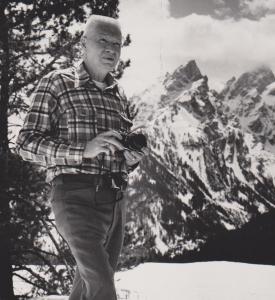This is probably going to be difficult, but imagine yourself in the body of a young animal—let's say, a fawn—walking along in the wild. It's not hunting season, no one is interested in your pelt, and you're not even big enough to tempt a meat hunter. You should have nothing to fear from humans. Nonetheless, you walk into a trap, literally. Your leg is caught in what's called a body-gripping trap. And now you have several potential futures, all of which are horrible: After a time of great suffering, you may die of heat, starvation, or dehydration. You may get eaten by a predator. You may die of internal injuries.
Okay, back to human form: Real deaths like these haunted Dick Randall. He was a professional trapper for the U.S. Department of Agriculture's Animal Damage Control program, and he knew that millions upon millions of animals were trapped and killed every year, many of them needlessly. He knew that these animals suffered grievously and that one of the most popular traps—the steel-jaw leghold trap—had been declared inhumane by the American Veterinary Medical Association, the American Animal Hospital Association, and the National Animal Control Association; moreover, it had been banned or severely restricted in 8 states and 80 countries.
But the turning point for Randall came in 1973. He had taken his 10-year-old son out to see the coyotes that he had set to capture in Wyoming's RedDesert. But instead of coyotes, they came upon a bobcat caught in one of Randall's traps. It had chewed partway through its own foot in an effort to escape, it was weak and dehydrated, and as Randall and his son approached, it lunged, collapsed, and died. Randall's son looked at the bobcat and then his father. He said, "Why are you doing this, Dad?" Randall had no good answer.
So Dick Randall went against the USDA and his peers. He quit his job and became first a field representative for Defenders of Wildlife, then a consultant for the Humane Society. He traveled the country, speaking before community groups about the suffering of animals caught in traps. In 1976 he testified before a US congressional hearing about the indiscriminate cruelty caused by the tools of his trade and showing them sickening photos he'd taken of all kinds of animals caught in traps. Part of his testimony: "Even though I was an experienced professional trapper, my trap victims included non-target species such as bald eagles and golden eagles, a variety of hawks and other birds, rabbits, sage grouse, pet dogs, deer, antelope, porcupines, sheep, and calves. The leghold trap is inherently nonselective. It is probably the most cruel device ever invented by man."
Trap manufacturers responded by designing a "padded leghold trap," but subsequent studies showed that animals caught in these traps still suffered lacerations and fractures. It really didn't matter, though, since fewer than 2 percent of traps owned by U.S. trappers were padded.
The other responses were directed mainly at Randall. People don't take kindly to those who besmirch their careers and their way of life. He lost friends and his reputation. Still, he perseveres. He continues his campaign, he's planning a documentary with the Humane Society, and he tells everyone he can about the inhumanity of traps. He has no patience for the excuses of trappers, either, many of whom claim that they're protecting their livestock. He tells them that good ranchers and farmers know how to protect their livestock without this indiscriminate maiming and killing.
"Mass extermination of wildlife has never solved the problem of protecting livestock from predators," he says. "It's cruel, it's futile, and it has to stop."

